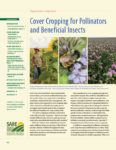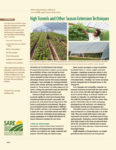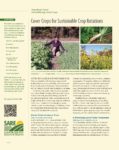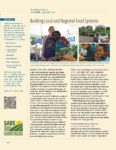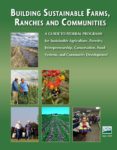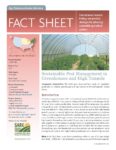Showing 71-80 of 133 results
This 16-page bulletin will help you use cover crops to encourage populations of pollinators and beneficial insects on your farm while you address your other resource concerns.
From low covers to high tunnels, from hoop houses to greenhouses—producers are finding ever more innovative ways to extend the growing season, and their income stream.
Cover crops are one of the best ways to improve soil health, reduce off-farm inputs and protect natural resources. Find a wealth of educational materials developed out of decades of SARE-funded cover crop research.
More and more, farmers, ranchers, ag professionals, community organizers and others are striving to reconfigure the nation's food system so more value stays in food-producing communities.
This guide lists funding opportunities offered by federal programs, and is indispensable for anyone seeking government help to foster their innovative enterprise in forestry and agriculture.
From 2007 to 2009, Cornell researchers in New York used a SARE grant to study the efficacy of biological insect control in minimally heated greenhouses and high tunnels or hoop houses. This fact sheet reports the results and provides detailed advice on how growers can use natural enemies to manage insect pests in minimally heated greenhouses and unheated high tunnels.
Avicultura Rentable: Criando Aves en Pasturas es una guía que incluye experiencias de agricultores y lo último en investigación para criar pollos y pavos usando corrales, cercos portátiles y pasturas.
All session recordings and slide presentations from the National Conference on Cover Crops and Soil Health are available online. Held in 2014 in Omaha, Neb., the event brought together 300 agricultural leaders and innovators to explore how we can make American agriculture more sustainable through improved soil health. Attendees represented agricultural industry, the farm community, academia, government, commodity and conservation organizations.
Watch opening sessions of the conference, held on Tuesday, Feb. 18 and broadcasted live to 230 locations across the country as part of the Cover Crops and Soil Health Forums.
General (plenary) presentations on cover crops and soil health.
